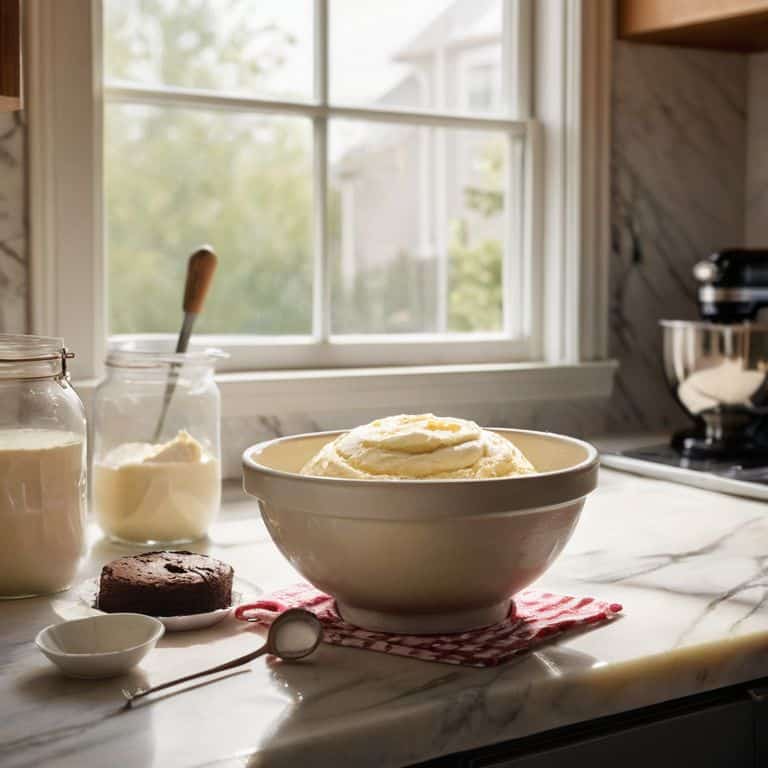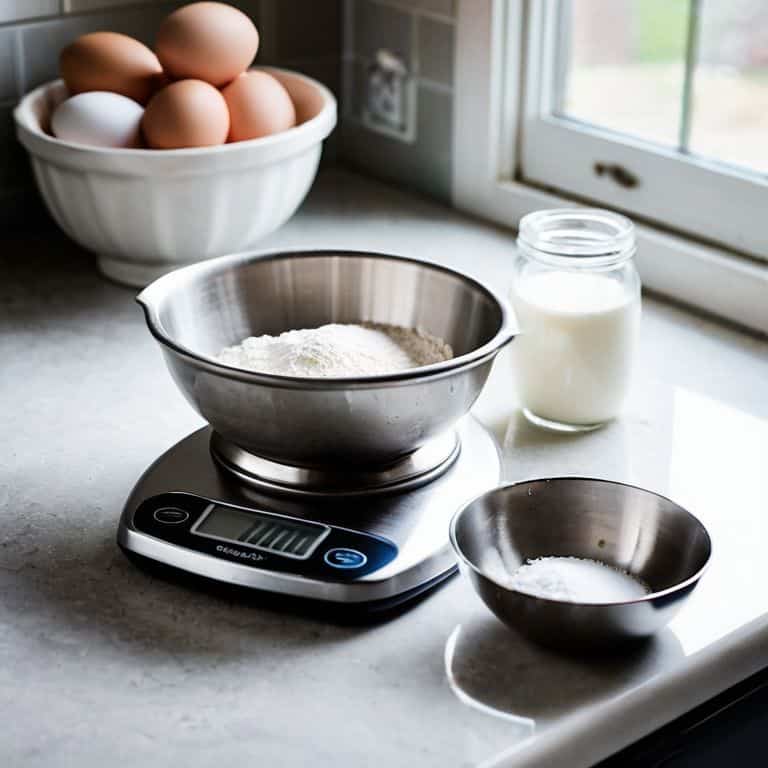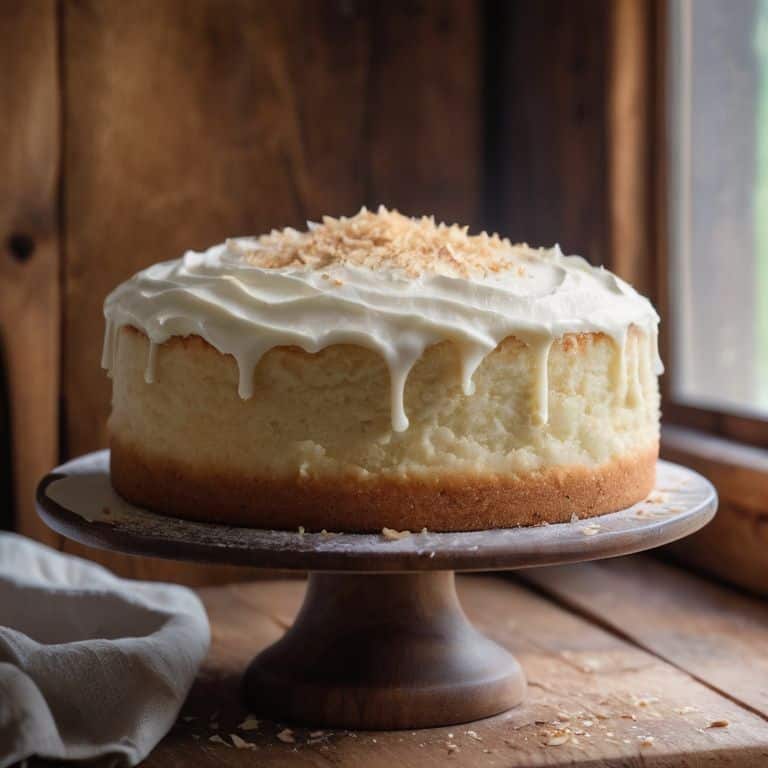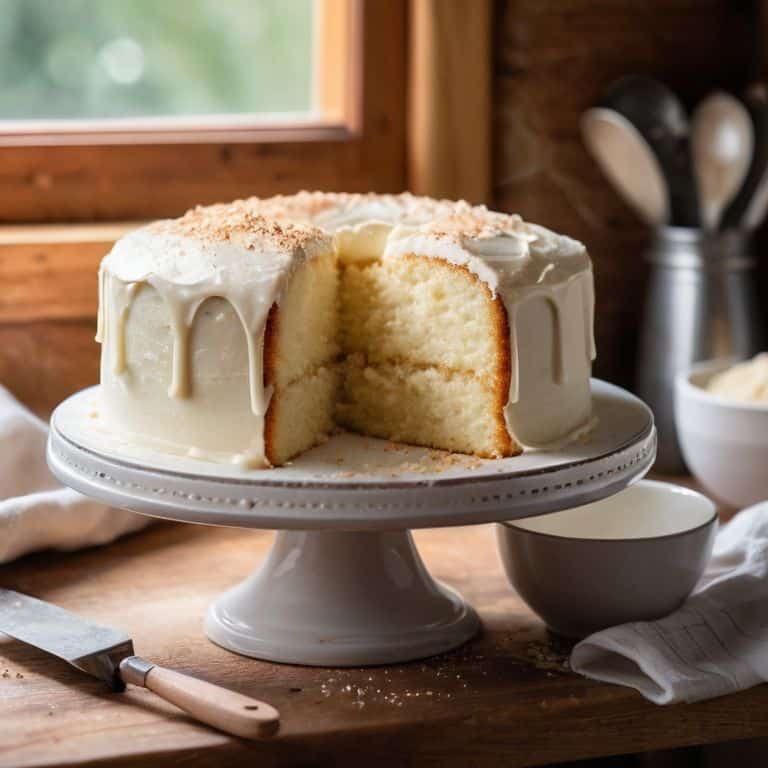As a flight instructor, I’ve learned that turbulence can be just as unpredictable in the kitchen as it is in the skies. I still recall my first attempt at baking a cake, only to watch it sink in the middle like a plane in a stall. It was a hard lesson, but it taught me the importance of understanding the fundamentals of baking, just as I do with flying. When it comes to how to prevent cakes from sinking in the middle, many of us have been led to believe that it’s all about adding more leavening agents or mixing the batter to perfection. However, I’ve found that the truth lies in a simpler, more methodical approach.
In this article, I’ll share my step-by-step guide to preventing cakes from sinking in the middle. You’ll learn how to identify the common pitfalls that lead to a sunken cake and how to overcome them with ease. From understanding the role of ingredients to mastering the art of even baking, I’ll walk you through the process with the same patience and clarity that I use when teaching my flight students. By the end of this guide, you’ll be equipped with the knowledge and confidence to bake a cake that rises smoothly and evenly, just like a well-executed flight plan.
Table of Contents
Guide Overview: What You'll Need

Total Time: 30 minutes to 1 hour
Estimated Cost: $10 – $20
Difficulty Level: Easy
Tools Required
- Oven thermometer to ensure accurate oven temperature
- Mixing bowls stainless steel or glass
- Measuring cups dry and liquid
- Electric mixer stand or handheld
- Rubber spatula for scraping sides of bowls
Supplies & Materials
- All-purpose flour fresh stock
- Baking powder check expiration date
- Baking soda check expiration date
- Salt plain, not flavored
- Granulated sugar white
- Unsalted butter at room temperature
- Large eggs at room temperature
- Whole milk at room temperature
- Pure vanilla extract optional
Step-by-Step Instructions
- 1. First, let’s start with the foundation of a great cake: understanding the recipe. Take a close look at your recipe and make sure you’re not overmixing the batter, as this can lead to a dense cake that’s more likely to sink in the middle. I like to think of it like navigating through turbulent airspace – you need to be gentle and smooth to avoid any unnecessary stress on the cake.
- 2. Next, ensure you’re using the right type of flour for your cake. Using cake flour can help produce a tender crumb and a lighter texture, making it less likely to sink. It’s similar to choosing the right aircraft for your flight plan – you need the right tools for the job to ensure a successful outcome.
- 3. Now, let’s talk about leavening agents. These are the ingredients that help your cake rise, such as baking powder or baking soda. Make sure you’re using the right amount and type for your recipe, as too little can result in a dense cake, while too much can cause it to collapse. It’s a bit like adjusting your altitude – you need to find the right balance to stay on course.
- 4. Preheating your oven to the correct temperature is crucial. An oven that’s too hot or too cold can affect the rise of your cake, so make sure you’re using an oven thermometer to get an accurate reading. This is similar to checking your aircraft’s instruments before takeoff – you need to know your surroundings to make informed decisions.
- 5. When it comes to mixing your batter, remember to do it just until the ingredients come together. Overmixing can result in a tough, dense cake that’s prone to sinking. It’s a bit like flying through a storm – you need to be gentle and smooth to avoid any turbulence.
- 6. Now, let’s talk about pan preparation. Make sure your cake pan is properly greased and floured to prevent the cake from sticking. This can help the cake rise evenly and reduce the risk of it sinking in the middle. It’s similar to preparing your aircraft for landing – you need to make sure everything is in order to ensure a smooth touchdown.
- 7. Once your cake is in the oven, resist the temptation to open the door and check on it too often. This can cause the cake to sink or become misshapen. Instead, set a timer and let it cook for the recommended time. It’s a bit like flying on autopilot – you need to trust the system and let it do its job.
- 8. Finally, once your cake is done, let it cool completely in the pan before removing it. This can help it set properly and reduce the risk of it breaking or sinking. It’s similar to going through the post-flight checklist – you need to make sure everything is in order before calling it a day.
Preventing Cake Sinkage

As we delve into the world of cake baking, it’s essential to understand the common cake baking mistakes that can lead to a sunken center. One of the most critical factors is the importance of accurate measurements. Ensuring that you’re using the right amount of ingredients can make all the difference in achieving a stable cake structure. A simple miscalculation can throw off the entire recipe, resulting in a cake that’s more likely to sink than rise.
When it comes to troubleshooting sunken cake centers, there are a few key things to consider. The effects of humidity on cake texture can be significant, and understanding how to adjust your recipe accordingly can help you avoid a soggy or sunken cake. By taking the time to consider the environmental factors at play, you can make informed decisions about your recipe and technique. This might involve adjusting the temperature or humidity in your baking space, or making tweaks to your ingredient ratios.
To achieve cake structure and stability tips, it’s crucial to focus on the fundamentals of cake construction. This includes understanding the role of egg temperature in cake recipes and how it can impact the final texture and stability of your cake. By paying attention to these details and making adjustments as needed, you can create a cake that’s not only delicious but also visually appealing, with a smooth and even texture that’s sure to impress.
Avoiding Common Baking Mistakes
As we navigate the world of cake baking, it’s essential to recognize common pitfalls that can lead to sinkage. Overmixing, for instance, is a frequent culprit, much like turbulence in flight – it can throw your entire operation off course. Similarly, incorrect oven temperatures or opening the oven door too often can disrupt the delicate balance of your cake’s ascent, causing it to sink.
To avoid these mistakes, I recommend creating a pre-baking checklist, akin to a pilot’s pre-flight checklist. This simple step can help ensure you’re on the right track, from accurately measuring ingredients to monitoring oven temperature. By being methodical and attentive, you’ll be well on your way to baking cakes that rise smoothly, just like a well-executed flight plan.
Importance of Accurate Measurements
Just as a pilot needs to ensure accurate fuel calculations for a safe flight, bakers must prioritize precise measurements to prevent cake sinkage. Inaccurate measurements can throw off the delicate balance of ingredients, leading to a dense or sunken cake. To avoid this, I recommend using a digital scale to measure ingredients, rather than relying on volume measurements. This simple step can make a significant difference in the final result, much like how a slight adjustment in altitude can impact a plane’s flight trajectory.
By taking the time to measure ingredients accurately, you’ll be well on your way to achieving a light and fluffy cake that rises smoothly, just like a well-executed takeoff. Remember, in baking and flying, precision is key to a successful outcome.
Leveling Out: 5 Key Tips to Prevent Cake Sinkage

- Ensure your leavening agents are fresh and properly stored to maintain their potency, just like how a pilot checks the aircraft’s instruments before takeoff
- Don’t overmix your batter, as this can lead to a dense cake that’s more likely to sink, much like how turbulence can throw a flight off course
- Respect the recipe and avoid overfilling your cake pans, leaving enough room for the cake to rise smoothly, just as a pilot needs to respect the aircraft’s weight and balance limits
- Keep your oven temperature in check, as an incorrect temperature can affect the cake’s rise and structure, similar to how a pilot monitors the weather to navigate through challenging conditions
- Don’t open the oven door too often, as this can cause the cake to sink or become misshapen, much like how a pilot needs to maintain a steady course to reach their destination safely
Key Takeaways for Smooth Cake Landings
Ensure your ingredients are at room temperature before mixing to maintain consistent batter density, much like how a pre-flight check ensures all systems are go for a smooth takeoff
Accurate measurements are crucial, just as navigating through turbulence requires precise flight controls – a little miscalculation can lead to a significant difference in the outcome
Resist the urge to overmix, allowing your cake to rise gently like an airplane gaining altitude, and remember, patience in the kitchen, just like in the cockpit, is key to a successful landing – or in this case, a perfectly baked cake
Navigating the Skies of Baking
Just as a steady hand on the controls and a keen eye on the horizon are crucial for a smooth flight, precise measurements and a gentle touch are essential for a cake that rises smoothly, avoiding the turbulence of sinkage and landing perfectly in the middle.
Daniel Sato
Landing Safely: Conclusion
As we touch down on our guide to preventing cakes from sinking in the middle, let’s do a quick preflight review of the key points. We’ve covered the importance of accurate measurements, avoiding common baking mistakes, and the crucial steps to take in preventing cake sinkage. By following these simple, step-by-step instructions, you’ll be well on your way to baking cakes that rise smoothly and evenly, much like a well-executed flight plan. Remember, practice makes perfect, so don’t be discouraged if it takes a few attempts to get it just right – every experienced pilot (and baker) has been there.
Now, as you embark on your own baking adventures, keep in mind that the principles of flight can be applied to many areas of life, including the kitchen. Just as a good pilot must be patient, observant, and willing to learn from mistakes, a skilled baker must also be mindful of these traits. So, go ahead and take to the skies – or rather, the kitchen – with confidence, knowing that with persistent practice and a willingness to learn, you’ll be creating delicious, sink-free cakes in no time. And who knows, you might just find that the thrill of baking is not so different from the thrill of flying – both require skill, patience, and a passion for the journey.
Frequently Asked Questions
What are the most common ingredients or mixing techniques that can cause a cake to sink in the middle?
When it comes to ingredients, overmixing or using old leavening agents can cause a cake to sink. Similarly, mixing techniques like overbeating eggs or not folding in ingredients gently can also lead to a sunken center. Think of it like turbulence in flight – smooth, gentle movements are key to a safe landing, or in this case, a perfectly baked cake.
How does oven temperature and baking time affect the likelihood of a cake sinking, and what adjustments can be made to prevent this?
Think of oven temperature and baking time as navigating through turbulence – small changes can throw you off course. Incorrect temperature or timing can cause cakes to sink. To adjust, try increasing oven temperature by 1-2% and decreasing baking time by 5-10% to prevent overcooking, just like making subtle pitch adjustments to stabilize your flight.
Are there any specific cake recipes or types, such as sponge cakes or cheesecakes, that are more prone to sinking and require special precautions?
When it comes to specific cake types, sponge cakes and cheesecakes can be particularly finicky. Their delicate structures make them more prone to sinking. For these, it’s crucial to ensure accurate temperatures, gentle folding, and precise baking times. Think of it like navigating through turbulent airspace – you need a steady hand and a keen eye on your instruments.
